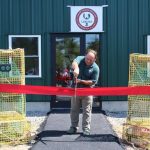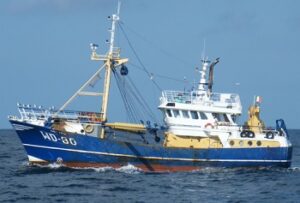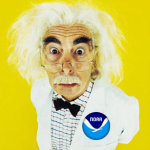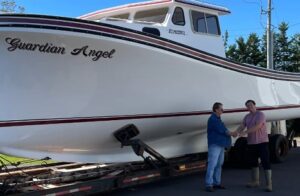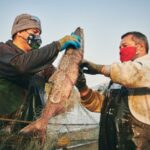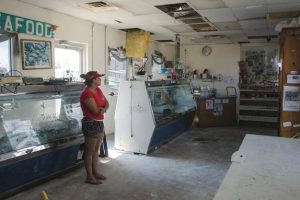Monthly Archives: January 2017
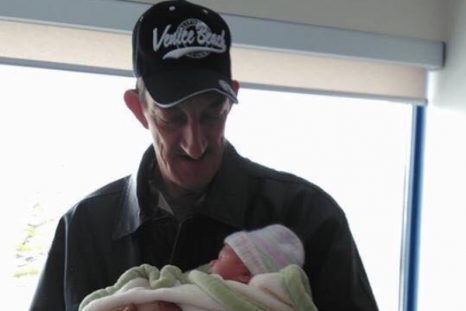
Lobster Fisherman Gentle Giant (Jim Buchanan) Fundraiser
As most people have already heard, the Buchanan family is going through a tragedy. Jim Buchanan (Big Jim) passed away suddenly on Saturday, January 7th, 2017. He is survived by his loving wife Lisa, two sons Matthew and Brett, a daughter Melissa, and a beautiful 9-month-old granddaughter. He was the “bread winner” of the family. Not only did he support his family but many in the community as well. His house was like a ‘do drop in’ and no one ever left there hungry. His house, for a family of 5, always had a family of 20. He didn’t know the word “no”. The family is at such a lose that they could really use some help to get them back on their feet. Please donate if you can, click here 16:24
Opponents line up in showdown over limits to shrimp trawling
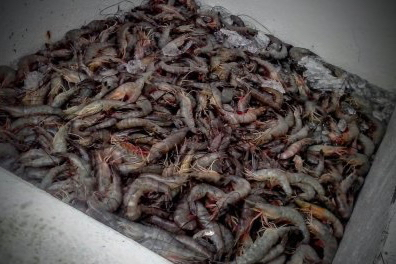 Hyde County Commissioners, along with local stakeholders and seafood advocates, have issued strong opposition to proposed rules that would result in major changes to the state’s commercial trawling industry. They say the restrictions could ultimately end the state’s access shrimp.,, Other rule changes outlined in the 99-page NCWF petition are: Limiting shrimp trawling to three days a week; limiting trawling to daytime only; limiting the total head rope (the span of the nets) to 90 feet; establishing 45-minute tow times; define type of gear and how it can be used in special secondary nursery areas;and opening the season based on a 60 shrimp per pound. Last week, Hyde County Board of Commissioners passed a resolution opposing the rules. Read the story here 15:16
Hyde County Commissioners, along with local stakeholders and seafood advocates, have issued strong opposition to proposed rules that would result in major changes to the state’s commercial trawling industry. They say the restrictions could ultimately end the state’s access shrimp.,, Other rule changes outlined in the 99-page NCWF petition are: Limiting shrimp trawling to three days a week; limiting trawling to daytime only; limiting the total head rope (the span of the nets) to 90 feet; establishing 45-minute tow times; define type of gear and how it can be used in special secondary nursery areas;and opening the season based on a 60 shrimp per pound. Last week, Hyde County Board of Commissioners passed a resolution opposing the rules. Read the story here 15:16
Man-Overboard Transmitter becomes new standard
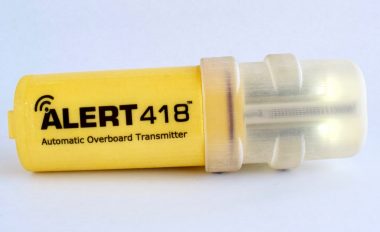 Emerald Marine Products announces the release of the ALERT418™ Man-Overboard Transmitter. Made in the USA, the enhanced unit is based on the company’s proven ALERT2 Transmitter, and is compatible with its Man-Overboard alarm system receiver and portable direction finder. Designed for working mariners, the ALERT418 Man-Overboard Transmitter is smaller and lighter than its predecessor: only 4.25″ L x 1.5″ W x 1″ D and 3.6 oz. For normal working conditions, it’s worn attached to a PFD. When it’s immersed in water, the reliable ALERT418 Man-Overboard Transmitter automatically sends a signal to the receiver. There’s no delay, as with AIS, so crew are instantly notified and can initiate an immediate man overboard rescue. The system can also set a waypoint or other digital action, and can be wired to kill the engine(s), making it ideal for solo fishermen. Link 13:01
Emerald Marine Products announces the release of the ALERT418™ Man-Overboard Transmitter. Made in the USA, the enhanced unit is based on the company’s proven ALERT2 Transmitter, and is compatible with its Man-Overboard alarm system receiver and portable direction finder. Designed for working mariners, the ALERT418 Man-Overboard Transmitter is smaller and lighter than its predecessor: only 4.25″ L x 1.5″ W x 1″ D and 3.6 oz. For normal working conditions, it’s worn attached to a PFD. When it’s immersed in water, the reliable ALERT418 Man-Overboard Transmitter automatically sends a signal to the receiver. There’s no delay, as with AIS, so crew are instantly notified and can initiate an immediate man overboard rescue. The system can also set a waypoint or other digital action, and can be wired to kill the engine(s), making it ideal for solo fishermen. Link 13:01
Turtle Excluder Devices: Public meeting on shrimping regulation gets little feedback
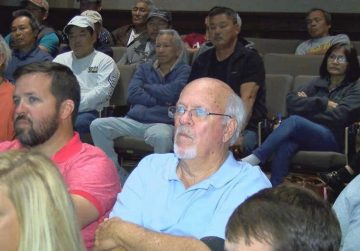 A new federal regulation on Coast shrimpers may add more stress on an already stressed industry. Wednesday’s meeting discussed expanding the use of Turtle Excluder Devices to shallow water skimmer nets. The National Oceanic and Atmospheric Administration meeting drew more than 50 fishermen. However, only one was willing to talk about the potential impact of the new TED regulation. “If this is implemented, you will lose more fishermen,” said Thau Bu, director of the Mississippi Coalition for Vietnamese American Fisherfolks and Families. “Livelihoods threatened, families facing serious hardship. We lose so much of the cultural traditional heritage and value the fishing communities have contributed for hundreds of years.” Bu was also upset that Vietnamese families in attendance didn’t get enough time to translate the information to even understand what was facing them. So, she spoke for them. Video, read the story here 12:02
A new federal regulation on Coast shrimpers may add more stress on an already stressed industry. Wednesday’s meeting discussed expanding the use of Turtle Excluder Devices to shallow water skimmer nets. The National Oceanic and Atmospheric Administration meeting drew more than 50 fishermen. However, only one was willing to talk about the potential impact of the new TED regulation. “If this is implemented, you will lose more fishermen,” said Thau Bu, director of the Mississippi Coalition for Vietnamese American Fisherfolks and Families. “Livelihoods threatened, families facing serious hardship. We lose so much of the cultural traditional heritage and value the fishing communities have contributed for hundreds of years.” Bu was also upset that Vietnamese families in attendance didn’t get enough time to translate the information to even understand what was facing them. So, she spoke for them. Video, read the story here 12:02
Tapeworm from Asian waters found in Southcentral Alaska salmon
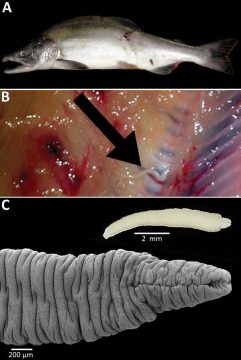 Scientists have found evidence that a parasite from Asian salmon has been spreading to North American fish, according to a newly released study on samples taken from Southcentral Alaska. The study,(click here) appearing in February’s issue of the journal Emerging Infectious Diseases published by the U.S. Centers for Disease Control and Prevention, reports on the discovery in Alaska salmon of Japanese broad tapeworm. Its authors say the results could mean Japanese broad tapeworms infecting humans have been mistaken for fish tapeworm, a species known by the CDC to affect North American fish. Scientists have found Japanese broad tapeworm, which was first identified in 1986 and can affect humans who consume infected fish raw, in chum, masu, pink and sockeye salmon from Japan and eastern Russia. About 2,000 cases of humans infected by the tapeworm have been reported primarily in northeast Asia, although the study’s authors say infections are likely under-reported. Read the story here 11:24
Scientists have found evidence that a parasite from Asian salmon has been spreading to North American fish, according to a newly released study on samples taken from Southcentral Alaska. The study,(click here) appearing in February’s issue of the journal Emerging Infectious Diseases published by the U.S. Centers for Disease Control and Prevention, reports on the discovery in Alaska salmon of Japanese broad tapeworm. Its authors say the results could mean Japanese broad tapeworms infecting humans have been mistaken for fish tapeworm, a species known by the CDC to affect North American fish. Scientists have found Japanese broad tapeworm, which was first identified in 1986 and can affect humans who consume infected fish raw, in chum, masu, pink and sockeye salmon from Japan and eastern Russia. About 2,000 cases of humans infected by the tapeworm have been reported primarily in northeast Asia, although the study’s authors say infections are likely under-reported. Read the story here 11:24
Newfoundland fisher harvesters consider disaffiliating from Unifor
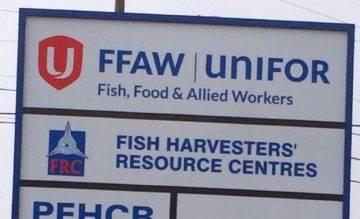 Representatives of the upstart Federation of Independent Sea Harvesters of Newfoundland and Labrador (FISH-NL) applied to the provincial Labour Relations Board on Dec. 30 to certify a breakaway union for the province’s inshore fish harvesters. Currently, the fishers are organized by the Fish, Food and Allied Workers (FFAW), which is an affiliate of Unifor, Canada’s largest industrial union.,, Fishers have cited many examples of the FFAW apparatus feathering its own nest at the expense of the workers it purports to represent. In a particularly telling case, the Newfoundland Supreme Court recently upheld a complaint by dissident FFAW members, finding that the union had “failed in its responsibilities to fishermen” by secretly negotiating a deal with provincial energy conglomerate Nalcor.,, The grievances of the inshore fishers of Newfoundland are real. Unifor-FFAW does in fact operate as a business in a naked conflict of interest with its own membership. Read the article here 09:57
Representatives of the upstart Federation of Independent Sea Harvesters of Newfoundland and Labrador (FISH-NL) applied to the provincial Labour Relations Board on Dec. 30 to certify a breakaway union for the province’s inshore fish harvesters. Currently, the fishers are organized by the Fish, Food and Allied Workers (FFAW), which is an affiliate of Unifor, Canada’s largest industrial union.,, Fishers have cited many examples of the FFAW apparatus feathering its own nest at the expense of the workers it purports to represent. In a particularly telling case, the Newfoundland Supreme Court recently upheld a complaint by dissident FFAW members, finding that the union had “failed in its responsibilities to fishermen” by secretly negotiating a deal with provincial energy conglomerate Nalcor.,, The grievances of the inshore fishers of Newfoundland are real. Unifor-FFAW does in fact operate as a business in a naked conflict of interest with its own membership. Read the article here 09:57
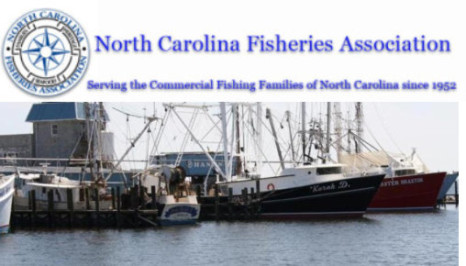
North Carolina Fisheries Association Weekly Update for January 9, 2017
Click here to read the Weekly Update, to read all the updates, Click here 09:29
Study shows Cook Inlet sockeye harvested in Kodiak
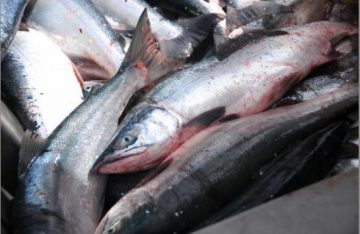 New genetic data indicates that many of the sockeye harvested by Kodiak’s commercial fishery may originate from Cook Inlet streams. The Alaska Department of Fish and Game published a study in December compiling three years of research into the genetics of sockeye salmon harvested by commercial fishermen in the Kodiak Management Area. In 2014, local Kodiak-origin stocks of sockeye salmon contributed 88 percent of the harvest, but in 2015 and 2016, they only contributed 58 percent of the harvest, according to the study. Almost all the rest of the harvest was Cook Inlet-origin stocks. In 2014, 8 percent of the harvest turned out to be from Cook Inlet. In 2015, that portion was 37 percent, and in 2016 it was 30 percent, according to the study. Chignik-origin sockeye salmon comprised another 10 percent, according to the study. Read the rest here 08:56
New genetic data indicates that many of the sockeye harvested by Kodiak’s commercial fishery may originate from Cook Inlet streams. The Alaska Department of Fish and Game published a study in December compiling three years of research into the genetics of sockeye salmon harvested by commercial fishermen in the Kodiak Management Area. In 2014, local Kodiak-origin stocks of sockeye salmon contributed 88 percent of the harvest, but in 2015 and 2016, they only contributed 58 percent of the harvest, according to the study. Almost all the rest of the harvest was Cook Inlet-origin stocks. In 2014, 8 percent of the harvest turned out to be from Cook Inlet. In 2015, that portion was 37 percent, and in 2016 it was 30 percent, according to the study. Chignik-origin sockeye salmon comprised another 10 percent, according to the study. Read the rest here 08:56
Maine’s Scallop season off to a good start
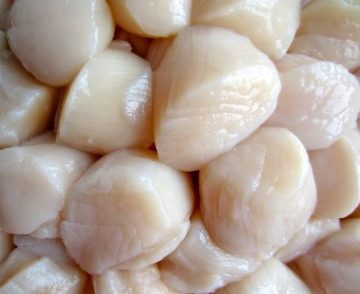 Five weeks into the scallop season the winter weather has begun to take a toll on fishing days, but not on landings. According to the Department of Marine Resources, when fishermen have been able to get off the mooring they have been seeing good landing. With snow, bitter temperatures and howling winds increasingly the norm since the last week of December, scallopers working outside the well-protected waters of Cobscook Bay got a break — or at least a chance for some relief — when several limited access areas opened to fishing on Monday, Jan. 2. While four segments of the coast were closed to fishing on New Year’s Day after their harvest targets were reached, the opening of the limited access areas gave an additional opportunity to the drag fleet in more protected waters once a week. So far, boat prices remain strong, and have even strengthened since the season’s opening. Read the story here 08:03
Five weeks into the scallop season the winter weather has begun to take a toll on fishing days, but not on landings. According to the Department of Marine Resources, when fishermen have been able to get off the mooring they have been seeing good landing. With snow, bitter temperatures and howling winds increasingly the norm since the last week of December, scallopers working outside the well-protected waters of Cobscook Bay got a break — or at least a chance for some relief — when several limited access areas opened to fishing on Monday, Jan. 2. While four segments of the coast were closed to fishing on New Year’s Day after their harvest targets were reached, the opening of the limited access areas gave an additional opportunity to the drag fleet in more protected waters once a week. So far, boat prices remain strong, and have even strengthened since the season’s opening. Read the story here 08:03
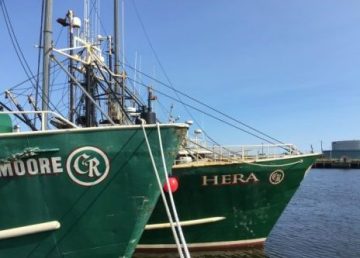
The Last Trial of the Codfather
Last night, just nine fishing boats pulled up to the dock behind the building, far fewer than the hundreds of boats lining up for the old city auction on Pier 3 in the 1980s. Back then, boats would haul in as much as 500 tonnes of cod, haddock, flounder, and other species of groundfish from the icy depths of the North Atlantic. Today’s groundfish catch is 4.3 tonnes. Most of the money keeping the port afloat is in scallops. I start to pull out a chair to take a seat when I hear a voice behind me. “I don’t think you want to do that,” says a lanky, gray-haired man reading a magazine. “The guy who normally sits in that chair will choke you to death.” “Choke you to death on cigarette smoke!” cracks a black guy with a patch on his beret that reads, “I’m Cape Verdean.” After I move to the back row, a big-bellied, bald man in a plaid shirt pushes past the No Smoking sign on the front door and walks into the room. He takes his seat and lights up a Winston cigarette. He spits out a few words about a dissatisfied fish buyer to the auction owner in raspy Portuguese. Then, he switches to English. “Tell him he can go fuck himself, the fish is fine,” he growls. “I saw every fucking one, it’s his fucking problem.” It doesn’t take me long to realize that this is Carlos Rafael, otherwise known as The Codfather, who was out of jail on a US $2-million bond. Under the table, an electronic monitoring bracelet is beaming his location to federal authorities who are making sure he gets back to his house every night by 8:30 p.m. Read this article here 21:16
On This Day, 2006: Coast Guard tows disabled Lady of Grace to port
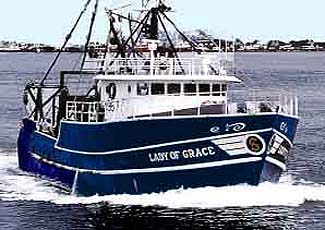 On this day in 2006 the Coast Guard towed a 76-foot fishing vessel to safety after the vessel became disabled near Nantucket early Monday morning. The Lady of Grace with four crew members on board, contacted the Coast Guard Sector Southeastern New England Command Center at 3:34 a.m. and reported they were without power and drifting approximately 10 miles east of Great Point, Nantucket. A rescue boat crew from Coast Guard Station Brant Point on Nantucket launched a 47-foot motor life boat to take the vessel in tow. Almost exactly a year later, on January 27, 2007, the Coast Guard launched a massive search for the fishing boat Lady of Grace after the 75-foot dragger failed to return as scheduled to New Bedford.1922: Weird January hurricane hits Cape, Read the rest here 16:23
On this day in 2006 the Coast Guard towed a 76-foot fishing vessel to safety after the vessel became disabled near Nantucket early Monday morning. The Lady of Grace with four crew members on board, contacted the Coast Guard Sector Southeastern New England Command Center at 3:34 a.m. and reported they were without power and drifting approximately 10 miles east of Great Point, Nantucket. A rescue boat crew from Coast Guard Station Brant Point on Nantucket launched a 47-foot motor life boat to take the vessel in tow. Almost exactly a year later, on January 27, 2007, the Coast Guard launched a massive search for the fishing boat Lady of Grace after the 75-foot dragger failed to return as scheduled to New Bedford.1922: Weird January hurricane hits Cape, Read the rest here 16:23
Always Top Quality! Your Seafreeze Ltd. Preferred Price List for January11, 2017 Has Arrived!
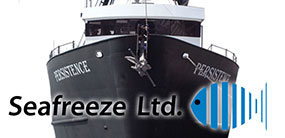 Contact our sales team today @ 401 295 2585 or 800 732 273 Click here for the complete price list from Seafreeze Ltd. – We are Direct to the Source-We are Fishermen-We are Seafreeze Ltd! Visit our website! 15:57
Contact our sales team today @ 401 295 2585 or 800 732 273 Click here for the complete price list from Seafreeze Ltd. – We are Direct to the Source-We are Fishermen-We are Seafreeze Ltd! Visit our website! 15:57
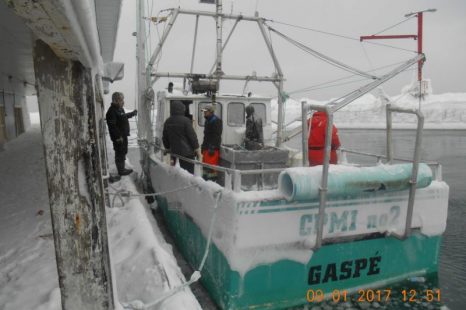
Boat docks in Green Island Cove after fright from storm
It’s not often, in January, you see a long liner tied up at the wharf in Green Island Cove. Or a search and rescue Cormorant hovering over the community in the dark with floodlights lighting the harbour and assisting a vessel into port. But that is what happened. The Crew of The vessel CPMI No2 were very happy to see the lights of Green Island Cove Sunday, Jan. 8, at around 7 p.m. The Cormorant flew very low over the wharf as a large crowd gathered, ready and eager to assist the vessel to tie up. The crew was attempting to steam their vessel from Englee around the tip of the peninsula and up the Strait of Belle Isle to Trout River. Read the story here 15:34
North Carolina: New trawl Bycatch Reduction Devices show promise
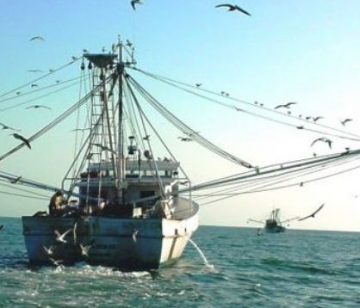 A state-initiated fishing industry workgroup is getting promising results with prototype bycatch reduction devices in shrimp trawls, and plans more tests this year. An industry work group created by the N.C. Marine Fisheries Commission met Monday at the Riverfront Convention Center to discuss ongoing testing of prototype BRDs, devices and gear configurations designed to reduce the amount of finfish and other marine life caught incidentally when fishing for a certain species, in this case shrimp. The group discussed the results of tests conducted in 2016 with four different BRDs towed by volunteer commercial shrimp harvesters, as well as set priorities for additional testing for this year. Last year was the first of a three-year research project the work group is conducting. Jerry Schill, executive director of the N.C. Fisheries Association, a nonprofit dedicated to promoting the state’s fishing industry, said the results from last year’s tests were “very positive.” “Even the (the work group members) were surprised at some of the results,” Mr. Schill said. “Ever since I started (in the fishing industry) 30 years ago, we’ve been trying to reduce bycatch in shrimp trawls.” Read the story here 15:01
A state-initiated fishing industry workgroup is getting promising results with prototype bycatch reduction devices in shrimp trawls, and plans more tests this year. An industry work group created by the N.C. Marine Fisheries Commission met Monday at the Riverfront Convention Center to discuss ongoing testing of prototype BRDs, devices and gear configurations designed to reduce the amount of finfish and other marine life caught incidentally when fishing for a certain species, in this case shrimp. The group discussed the results of tests conducted in 2016 with four different BRDs towed by volunteer commercial shrimp harvesters, as well as set priorities for additional testing for this year. Last year was the first of a three-year research project the work group is conducting. Jerry Schill, executive director of the N.C. Fisheries Association, a nonprofit dedicated to promoting the state’s fishing industry, said the results from last year’s tests were “very positive.” “Even the (the work group members) were surprised at some of the results,” Mr. Schill said. “Ever since I started (in the fishing industry) 30 years ago, we’ve been trying to reduce bycatch in shrimp trawls.” Read the story here 15:01
Zhengzhou Airport welcomes charter flight with live lobsters from North America
 Zhengzhou Xinzheng International Airport welcomed a charter flight from Halifax, Canada Airport, on the evening of January 9. The United States National Airlines charter flight was full of live lobsters from Canada. With this, Zhengzhou Xinzheng Airport imports North American seafood. The security units at the airport geared up to handle 156 one hundred tonnes of live shrimp. The customs inspection and quarantine departments were also immediately involved to check and release. It is understood that these Boston lobster are from Canada, Boston lobster, meat is more tender and detailed, the product has a variety of trace elements rich and delicious. Mainly grown in the North Atlantic Ocean near the Arctic cold sea waters, very cold water, so the growth was particularly slow, the “century lobster,” said. These exotic lobsters from Zhengzhou will be delivered directly through the air transport to the domestic Guangzhou, Fujian, Shanghai, Shandong and other provinces and cities. Link 13:52
Zhengzhou Xinzheng International Airport welcomed a charter flight from Halifax, Canada Airport, on the evening of January 9. The United States National Airlines charter flight was full of live lobsters from Canada. With this, Zhengzhou Xinzheng Airport imports North American seafood. The security units at the airport geared up to handle 156 one hundred tonnes of live shrimp. The customs inspection and quarantine departments were also immediately involved to check and release. It is understood that these Boston lobster are from Canada, Boston lobster, meat is more tender and detailed, the product has a variety of trace elements rich and delicious. Mainly grown in the North Atlantic Ocean near the Arctic cold sea waters, very cold water, so the growth was particularly slow, the “century lobster,” said. These exotic lobsters from Zhengzhou will be delivered directly through the air transport to the domestic Guangzhou, Fujian, Shanghai, Shandong and other provinces and cities. Link 13:52
From the Mayor’s Chair by Absecon Mayor John Armstrong – Keep summer flounder limits as they are
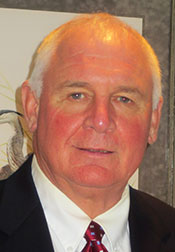 One of my New Year’s resolutions is to do everything possible to preserve jobs and to attract new ones for our local residents. As a local mayor, my direct influence over regional issues affecting our economy is necessarily limited. Nevertheless, I still have a voice and I need to raise it when I see something happening which may affect the opportunity for Absecon residents to earn a living. Statement in Opposition to Implementation of Summer Flounder Draft Addendum XXVIII – As the Mayor of the City of Absecon, Atlantic County, New Jersey, I write to voice my firm opposition to the regulations promulgated by NOAA Fisheries and the Mid-Atlantic Regional Fishery Management Council which would reduce the commercial quota and recreational harvest limits for summer flounder in 2017 and 2018. Read the rest here 13:30
One of my New Year’s resolutions is to do everything possible to preserve jobs and to attract new ones for our local residents. As a local mayor, my direct influence over regional issues affecting our economy is necessarily limited. Nevertheless, I still have a voice and I need to raise it when I see something happening which may affect the opportunity for Absecon residents to earn a living. Statement in Opposition to Implementation of Summer Flounder Draft Addendum XXVIII – As the Mayor of the City of Absecon, Atlantic County, New Jersey, I write to voice my firm opposition to the regulations promulgated by NOAA Fisheries and the Mid-Atlantic Regional Fishery Management Council which would reduce the commercial quota and recreational harvest limits for summer flounder in 2017 and 2018. Read the rest here 13:30
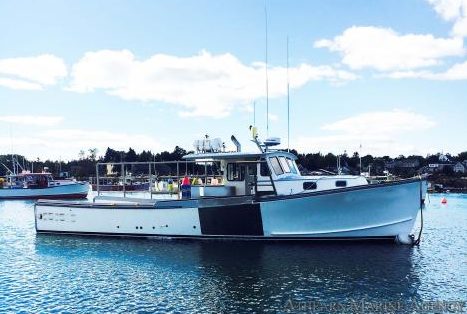
Athearn Marine Agency Boat of the Week: 45′ MDI Lobster boat, CAT 3406C, Price Reduced!
Specifications, information and 4 photo’s click here To see all the boats in this series, Click here 13:05
FISH-NL hires lawyer David Goodland
 The Federation of Independent Sea Harvesters of Newfoundland and Labrador (FISH-NL) has hired well-known St. John’s lawyer David Goodland to represent the organization’s certification application currently before the Labour Relations Board. “David’s one of the best labour lawyers in the province and we couldn’t be more pleased to have him aboard,” says Ryan Cleary, President of FISH-NL. “He has a proven track record, most recently having successfully represented scallop fishermen in the Strait of Belle Isle in their case against the FFAW.” Last March, the Supreme Court of Newfoundland and Labrador ruled in favour of 76 scallop fishermen who took the FFAW to court over a compensation fund for lost fishing grounds. Nalcor agreed in 2014 to pay out $2.6 million to keep fishermen away from an undersea cable needed to bring Muskrat Falls power to the island. The fishermen argued the money should be shared through lump sum payments among everyone who held scallop licence. FISH-NL presented an application to the Labour Relations Board on Dec. 30th requesting that it be certified to represent the province’s inshore fish harvesters, breaking them away from the FFAW. The application was released to the FFAW on Monday, giving the union and fish processors 10 calendar days to respond. In turn, FISH-NL will have 5 calendar days to respond to those responses. The Labour Relations Board will then conduct an investigation of the application and the membership cards, a process that could take “weeks or months.” Once that investigation is complete and a report is issued, FISH-NL will have 2 days to respond before the final report is released. 10:49
The Federation of Independent Sea Harvesters of Newfoundland and Labrador (FISH-NL) has hired well-known St. John’s lawyer David Goodland to represent the organization’s certification application currently before the Labour Relations Board. “David’s one of the best labour lawyers in the province and we couldn’t be more pleased to have him aboard,” says Ryan Cleary, President of FISH-NL. “He has a proven track record, most recently having successfully represented scallop fishermen in the Strait of Belle Isle in their case against the FFAW.” Last March, the Supreme Court of Newfoundland and Labrador ruled in favour of 76 scallop fishermen who took the FFAW to court over a compensation fund for lost fishing grounds. Nalcor agreed in 2014 to pay out $2.6 million to keep fishermen away from an undersea cable needed to bring Muskrat Falls power to the island. The fishermen argued the money should be shared through lump sum payments among everyone who held scallop licence. FISH-NL presented an application to the Labour Relations Board on Dec. 30th requesting that it be certified to represent the province’s inshore fish harvesters, breaking them away from the FFAW. The application was released to the FFAW on Monday, giving the union and fish processors 10 calendar days to respond. In turn, FISH-NL will have 5 calendar days to respond to those responses. The Labour Relations Board will then conduct an investigation of the application and the membership cards, a process that could take “weeks or months.” Once that investigation is complete and a report is issued, FISH-NL will have 2 days to respond before the final report is released. 10:49
Gloucester fisherman chosen for Gulf of Maine northern shrimp research project
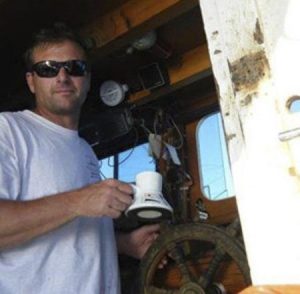 Joe Jurek is no stranger to the Gulf of Maine northern shrimp fishery, having incorporated shrimping into his annual fishing calendar even after moving to Gloucester about a decade ago to groundfish. “When sectors started in 2009, we would catch our groundfish quota as quickly as we could and then go fish the other fisheries, including the northern shrimp fishery,” Jurek said Tuesday. “I shrimped long before that, though. You could say it’s kind of my background.” Jurek, owner and skipper of the 42-foot F/V Mystique Lady, will be the lone Massachusetts representative in the upcoming Gulf of Maine winter shrimp sampling program that will produce the only legal shrimping in 2017 in the Gulf of Maine. The Mystique Lady is one of 10 trawlers participating in the sampling program, along with eight from Maine and one from New Hampshire captained by Mike Anderson of Rye. Read the story here 09:56
Joe Jurek is no stranger to the Gulf of Maine northern shrimp fishery, having incorporated shrimping into his annual fishing calendar even after moving to Gloucester about a decade ago to groundfish. “When sectors started in 2009, we would catch our groundfish quota as quickly as we could and then go fish the other fisheries, including the northern shrimp fishery,” Jurek said Tuesday. “I shrimped long before that, though. You could say it’s kind of my background.” Jurek, owner and skipper of the 42-foot F/V Mystique Lady, will be the lone Massachusetts representative in the upcoming Gulf of Maine winter shrimp sampling program that will produce the only legal shrimping in 2017 in the Gulf of Maine. The Mystique Lady is one of 10 trawlers participating in the sampling program, along with eight from Maine and one from New Hampshire captained by Mike Anderson of Rye. Read the story here 09:56
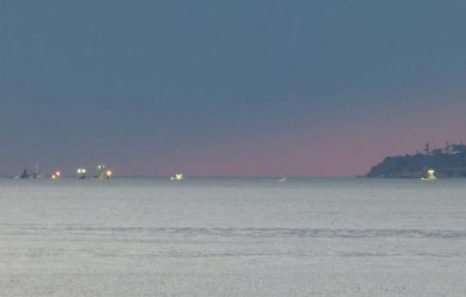
Squid boats dot Malibu coast – Roughly 40,157 tons of squid landed this season
Almost every night this winter, bright lights have appeared off the coast of Malibu. It’s an eerie sight on a foggy evening, suggesting something unearthly or supernatural, but the only thing these ghostly lights portend is the presence of Doryteuthis opalescens, the common market squid. It’s a good omen for California’s seafood industry. Market squid is one of California’s largest commercial fisheries, and tons of frozen California calamari are shipped all over the world each year. However, the species had almost entirely disappeared from Southern California waters last year. The absence of squid is being blamed on El Niño. California Department of Fish and Wildlife environmental scientist Laura Ryley studies squid. While concerns are being raised over the potential impact of prolonged ocean warming on the species, the return of more normal temperature conditions in the Pacific this winter appears to have signaled the return of the squid. Read the story here 09:22
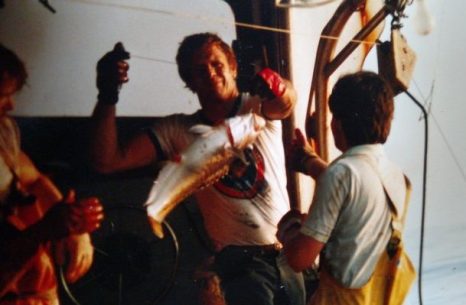
Commercial Fishing Pioneer And Poet David Krusa Dies At 75
Montauk resident David Krusa, a commercial fisherman and one of the pioneers of the local tilefish fishery, died this past week. He was 75. Mr. Krusa and his longtime fishing partner, John Nolan, were the first captains in Montauk and among the first on the East Coast to exclusively target tilefish, a golden-skinned species that inhabits the ocean bottom near the edge of the continental shelf and now supports a multimillion-dollar industry. After a battle with lymphoma in the 1990s forced him to give up his career on the water, Mr. Krusa turned to woodworking and writing poetry and short stories to exercise his boundless mental and physical energy. His works were featured frequently in the East Hampton Star and also in the anthology “On Montauk.” Mr. Krusa died of heart failure on January 4, his family said. In addition to his wife, Mr. Krusa is survived by two sons, Kip, of Tennessee, and Lee, of California, a daughter, Margaret McKinnon, of Texas, and a brother, Christopher, of Illinois.Read the story here 08:36
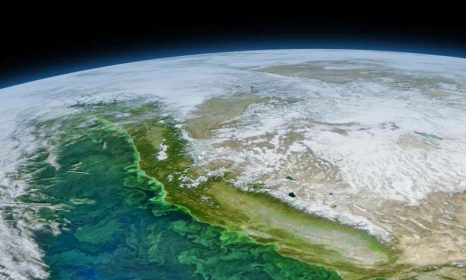
El Nino, Pacific Decadal Oscillation implicated in domoic acid shellfish toxicity
Using a combination of time-series data spanning two decades, the scientists not only showed a clear link between domoic acid and these larger climatic phenomena, but also developed a new model to predict with some accuracy the timing of domoic acid risks in the Pacific Northwest. The model is based on interpreting the status of the “Oceanic Niño Index” and the Pacific Decadal Oscillation – both of which are measures of climate, ocean water movement, currents and temperature. It’s designed to help coastal resource managers more effectively monitor this issue and protect public health. The findings were made by researchers from Oregon State University, the University of Oregon, the National Oceanic and Atmospheric Association (NOAA), and the Oregon Department of Fish and Wildlife. The work was primarily supported by NOAA. Read the article here 08:01
For the third consecutive year, testing finds Alaska seafood free of Fukushima radiation
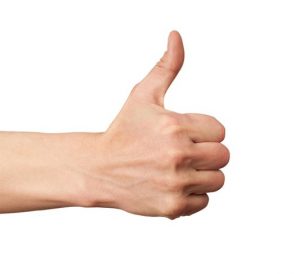 The Alaska Department of Environmental Conservation said in a statement that seafood samples from Alaska waters in 2016 tested negative for three Fukushima-related radioactive isotopes: iodine-131, cesium-134 and cesium-137. The findings for the tested species – including king, chum, sockeye and pink salmon, as well as halibut, pollock, sablefish, herring and Pacific cod – matched those from 2014 and 2015. “Fish species were chosen for testing based on their importance to subsistence, sport, and commercial fisheries and because they spend part of their life cycle in the western Pacific Ocean,” DEC officials wrote. “Samples of fish were taken by DEC environmental health officers during regular inspections of commercial fishing processors throughout the state.” Department spokeswoman Marlena Brewer said that the samples were tested at DEC’s Environmental Health Laboratory in Anchorage, using portable gamma-ray analysis equipment provided by the U.S. Food and Drug Administration. Click here to read the rest 18:26
The Alaska Department of Environmental Conservation said in a statement that seafood samples from Alaska waters in 2016 tested negative for three Fukushima-related radioactive isotopes: iodine-131, cesium-134 and cesium-137. The findings for the tested species – including king, chum, sockeye and pink salmon, as well as halibut, pollock, sablefish, herring and Pacific cod – matched those from 2014 and 2015. “Fish species were chosen for testing based on their importance to subsistence, sport, and commercial fisheries and because they spend part of their life cycle in the western Pacific Ocean,” DEC officials wrote. “Samples of fish were taken by DEC environmental health officers during regular inspections of commercial fishing processors throughout the state.” Department spokeswoman Marlena Brewer said that the samples were tested at DEC’s Environmental Health Laboratory in Anchorage, using portable gamma-ray analysis equipment provided by the U.S. Food and Drug Administration. Click here to read the rest 18:26
Counting Cards – FISH-NL says yes, FFAW says no
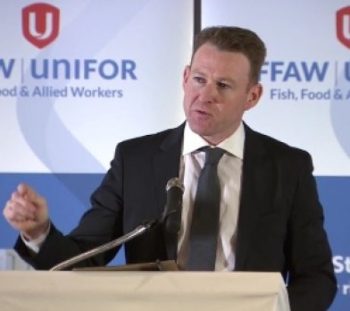
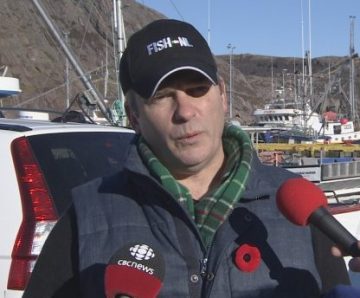 The breakaway group needs the support of 50 per cent plus one of the inshore harvesters in the province. FISH-NL claims there are, at most, 4,743 inshore harvesters, but the FFAW claims there are 10,200. FISH-NL revealed Monday 2,372 cards were submitted to the Labour Relations Board at the end of December, and asserted the number surpasses the necessary number. But the FFAW says FISH-NL has fallen short in its bid to represent inshore fishermen. FISH-NL says there are a total of 6,354 harvesters in Newfoundland and Labrador, according to a federal access to information request, but that figure includes both inshore and offshore. Read the story here 16:51
The breakaway group needs the support of 50 per cent plus one of the inshore harvesters in the province. FISH-NL claims there are, at most, 4,743 inshore harvesters, but the FFAW claims there are 10,200. FISH-NL revealed Monday 2,372 cards were submitted to the Labour Relations Board at the end of December, and asserted the number surpasses the necessary number. But the FFAW says FISH-NL has fallen short in its bid to represent inshore fishermen. FISH-NL says there are a total of 6,354 harvesters in Newfoundland and Labrador, according to a federal access to information request, but that figure includes both inshore and offshore. Read the story here 16:51
NFI sues NOAA over new IUU rule
The National Fisheries Institute 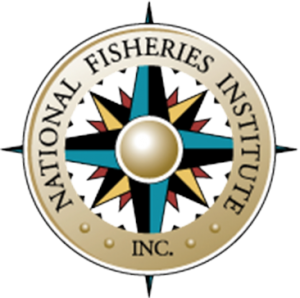 (NFI) has sued the National Oceanic and Atmospheric Administration (NOAA) and the Department of Commerce over a recently enacted rule that could cost the commercial fishing industry as much as USD 1 billion (EUR 946 million) annually. NOAA’s National Marine Fisheries Service issued a final rule on 9 December that requires U.S. seafood importers to trace the origin of the fish they import to either the specific boat that caught the fish or to its collection point, as well as the location and date the fish was caught. The regulation was designed to combat illegal, unregulated and unreported (IUU) fishing regulation, but it will cost the industry at least USD 100 million (EUR 95 million) per year, NFI said in a press release. Read the story here 14:11
(NFI) has sued the National Oceanic and Atmospheric Administration (NOAA) and the Department of Commerce over a recently enacted rule that could cost the commercial fishing industry as much as USD 1 billion (EUR 946 million) annually. NOAA’s National Marine Fisheries Service issued a final rule on 9 December that requires U.S. seafood importers to trace the origin of the fish they import to either the specific boat that caught the fish or to its collection point, as well as the location and date the fish was caught. The regulation was designed to combat illegal, unregulated and unreported (IUU) fishing regulation, but it will cost the industry at least USD 100 million (EUR 95 million) per year, NFI said in a press release. Read the story here 14:11
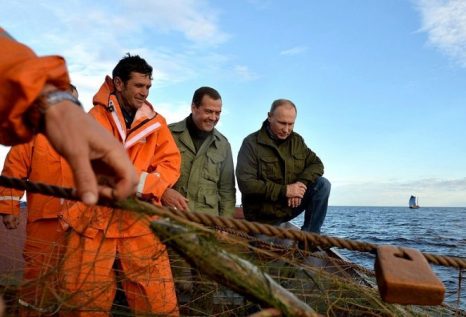
All the President’s Fishermen? Who’s Standing Behind Vladimir Putin!
In September, Russian President Vladimir Putin and Prime Minister Dmitry Medvedev took a trip to Ilmen Lake in Novgorod Oblast, about 500 kilometers northwest of Moscow, where they “accidentally” met and ate soup by the fire with a group of “local fishermen.” The trip, which was clearly staged, was supposed to highlight Putin and Medvedev’s connection to Russia’s “simple people,” and was reported on widely in state media. RuNet users had a good laugh about the idea of Putin and Medvedev stumbling across a group of fishermen in the course of their daily work, but it wasn’t until Orthodox Christmas last week that the fun really got started, Read the story here! 13:17
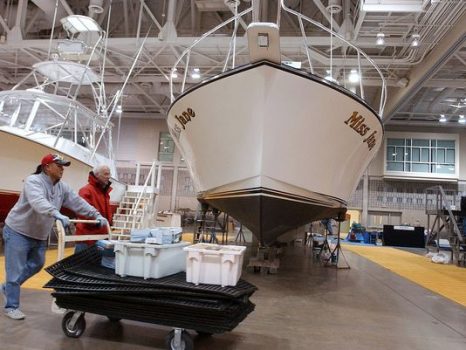
43rd Annual East Coast Commercial Fishermen’s and Aquaculture Trade Fishermen’s Expo is Jan. 15
The Maryland Watermen’s Association will host its 43rd annual East Coast Commercial Fishermen’s and Aquaculture Trade Expo at the Roland E. Powell Convention Center in Ocean City this weekend. It’s the only event of its kind in the Mid-Atlantic Region. The weekend will be full of seminars, fisherman gear, equipment and more. Friday, the event will begin at 11 a.m. and run until 5 p.m., Saturday the event will run from 10 a.m.- 5 p.m. and Sunday from 10 a.m.- 3 p.m. Tradeshow pre-registration tickets can be found online for $25 and tickets to the Friday cocktail party can be found online, as well, for $35. Seminars will begin on Saturday at 11 a.m. and run every half hour with Don Webster of the University of Maryland Extension moderating. More info, Read the story here 12:29 Maryland Watermen’s Association website www.marylandwatermen.com
Are Maine halibut headed for trouble?
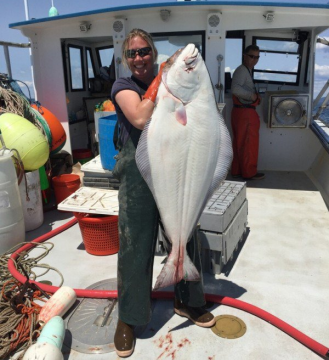 Go to Scales, an elegant waterfront restaurant on a Portland pier, and a plate of pan-roasted halibut with hazelnuts, brown butter and new potatoes will cost you $38, tax and tip extra. Go down to the dock in Lubec or Stonington during May and June, when Maine fishermen are allowed to harvest halibut from state waters inside the three-mile limit, and $38 would buy you about 5 pounds of halibut, if you could buy less than a whole fish directly off the boat. And that’s the problem. Over the decade between 2006 and 2015, the last year for which the Department of Marine Resources has figures, the boat price for halibut increased some 44 percent and landings increased from just 30,018 pounds worth about $139,000 to more than 93,000 pounds that brought fishermen some $623,000. Now federal fisheries regulators are saying that halibut may be in trouble. Read the story here 12:14
Go to Scales, an elegant waterfront restaurant on a Portland pier, and a plate of pan-roasted halibut with hazelnuts, brown butter and new potatoes will cost you $38, tax and tip extra. Go down to the dock in Lubec or Stonington during May and June, when Maine fishermen are allowed to harvest halibut from state waters inside the three-mile limit, and $38 would buy you about 5 pounds of halibut, if you could buy less than a whole fish directly off the boat. And that’s the problem. Over the decade between 2006 and 2015, the last year for which the Department of Marine Resources has figures, the boat price for halibut increased some 44 percent and landings increased from just 30,018 pounds worth about $139,000 to more than 93,000 pounds that brought fishermen some $623,000. Now federal fisheries regulators are saying that halibut may be in trouble. Read the story here 12:14
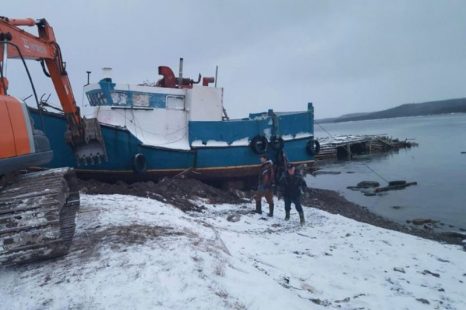
‘An act of the devil’: Cold Water Cowboys’ boat washes ashore in storm
The fishing vessel, which made a name for itself on the Discovery Canada reality TV series Cold Water Cowboys, succumbed to the harsh winter seas of the North East Gulf when a storm struck the region on Dec 30. The Sea Doo was tied up at the family wharf in Port Saunders when the storm hit with an unusual ferocity. Conway Caines, who witnessed the destruction of his boat after being alerted by a phone call, described such conditions in that area as an “anomaly.” He had never seen anything quite like that there before. “Everything lined up, I guess,” he told the Northern Pen. “There was a big tide surge. The moon was out and the tide was high.” Read the story here 10:07
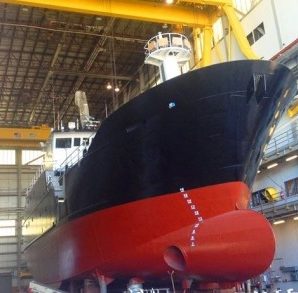
New North Pacific fleet would cost $11.6B
Rejuvenating Alaska’s large vessel fishing fleet could be nearly an $11 billion boon for Outside shipyards, according to a new McDowell Group report. The Alaska-based research firm pegged $11.3 billion as the cost to completely replace the 414 fishing and processing vessels longer than 58 feet that participate in North Pacific fisheries off the coast of Alaska in a study commissioned by the Port of Seattle and the Washington Maritime Federation. Regulations require boats in Alaska’s salmon fisheries to be less than 58 feet, which makes that length the general delineator between smaller boats focused on near shore fisheries and larger vessels that fish and process catch in federal waters at least three miles offshore. Additionally, most of the more than 5,000 smaller commercial fishing boats that operate in Alaska homeport in the state and nearly all of the larger vessels in federal fisheries have Puget Sound addresses for a host of reasons. While the $11.3 billion baseline figure includes the cost to eventually replace a dozen vessels among the 414 built since they year 2000, according to McDowell Group the fleet averages 40 years old and 87 percent of the vessels were built before 1990. Read the article here 09:14


































